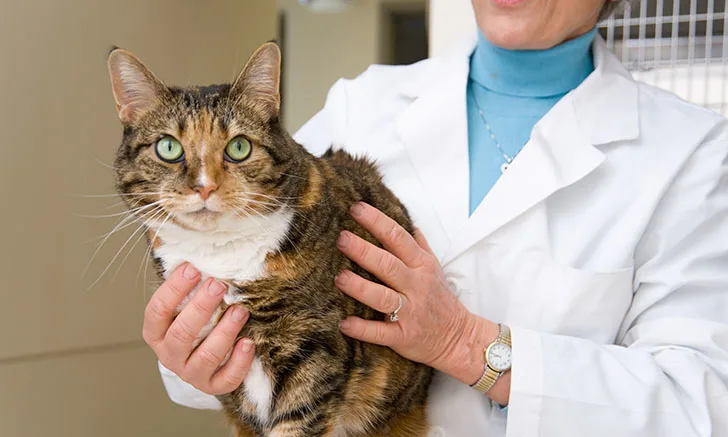Clinical Notes: Uremic Toxins in Feline Chronic Kidney Disease: Why Should We Care?
Jessica M. Quimby, DVM, PhD, DACVIM, The Ohio State University

Sponsored by an Unrestricted Educational Grant from Dechra
KEY TAKEAWAYS
Uremia, the accumulation of waste products (uremic toxins) in the blood resulting from decreased renal function, can cause clinical signs such as vomiting, anorexia, oral ulceration, and lethargy in patients with CKD.
Uremic toxins contribute to the worsening of renal function and have far-reaching systemic effects, such as accelerated muscle atrophy and decreased erythropoietin production.
Targeting the production or absorption of uremic toxins can be an effective management technique to improve the clinical picture of patients with CKD.
Porus One, a tasteless, odorless powder formulated for cats with CKD, binds protein byproducts in the intestines, after which they are eliminated in the feces before they can be converted to uremic toxins.
Chronic kidney disease (CKD) is a common condition in cats, affecting ≈30% to 40% of cats 10 years of age.1 Although clinical signs of CKD may start out as mild for many patients, the condition is progressive and can lead to more severe clinical signs associated with worsening uremia.2 Uremia occurs when the kidneys fail to appropriately filter and excrete waste material through the urine, resulting in signs such as oral ulcerations, vomiting, anorexia, and lethargy.2 A number of management techniques to slow and prevent the development of uremia are being investigated and should be considered for patients with CKD.
A growing body of research supports the concept that there is a significant connection between the gut and the kidney (ie, gut–kidney axis) in multiple species and that both of these systems have important influences on the other, with potential significant clinical implications.3,4 Uremia associated with CKD has been shown to negatively impact the gut microbiome, causing intestinal dysbiosis3,4 and shifting the microbiota to a less diverse community dominated by certain bacterial families. Problematically, dysbiosis also contributes to the production of uremic toxins, initiating a vicious cycle.5,6
Creatinine and BUN are the most well-known uremic toxins but, in reality, are only 2 of the ≈146 organic solutes that are putative uremic toxins.7 Of particular interest are uremic toxins that are the waste products of protein catabolism (eg, indoxyl sulfate, p-cresyl sulfate), as these are thought to not only have negative pathophysiologic effects but also to contribute to the clinical syndrome of uremia. Uremic toxins that are the product of protein catabolism are produced in the colon via protein fermentation.5,6,8
Deleterious Effects of Uremic Toxins
Numerous uremic toxins that accumulate in patients with CKD are known to have deleterious effects. The accumulation of indoxyl sulfate and p-cresyl sulfate in CKD has been associated with inciting the production of free radicals, activating the renin-angiotensin-aldosterone system, promoting renal fibrosis, inducing inflammation, damaging renal tubular cells, and stimulating the progression of glomerular sclerosis.9 These uremic toxins also contribute to morbidity and mortality by impairing the neurologic system, lowering erythropoietin production and bone turnover, accelerating muscle atrophy, and increasing the risk for cardiovascular disease.9
Uremic Toxins in Feline Chronic Kidney Disease
Cats with CKD have dysbiosis characterized by decreased fecal microbial diversity and richness.10 In addition, indoxyl sulfate is elevated in cats with CKD and is associated with disease progression.11,12 In a study, even cats with IRIS stage 2 CKD were documented to have uremic toxin concentrations that were significantly higher than control cats.10 These findings suggest uremic toxins can be used as a therapeutic target in the management of feline CKD.
Management Strategies
Dietary Protein
The concept of decreasing uremic toxins and clinical signs of uremia through palliation of dietary protein load is the central tenant behind the historical recommendation to restrict protein in veterinary renal diets.13 However, data on the effects of differing protein contents on uremic toxins in cats are limited. In one study of normal cats, a higher protein diet was associated with transient increased concentrations of p-cresyl sulfate but not indoxyl sulfate.14 In another study in cats with early stage CKD, increased uremic toxins were associated with higher dietary protein.15 Currently, recommendations for modification of protein in cats center more around delicately balancing the treatment goal with maintaining lean body mass.16 Ensuring adequate caloric intake when feeding a modified protein diet is key to ensuring the pet receives adequate dietary protein.
Reducing Absorption of Uremic Toxins
Reducing the absorption of uremic toxins is another management strategy that can be employed to decrease uremia. Porus One, a carbon-based adsorbent, is designed to bind precursors of indoxyl sulfate and p-cresyl sulfate in the digestive tract to help eliminate it from the body. Porus One is odorless and tasteless and can be added to a patient’s diet at mealtime.17 Additional products on the market include a specialized probiotic/prebiotic designed to beneficially target the microbiome, with the intent of creating an environment with less uremic toxin production. Data on the effectiveness of these products to decrease indoxyl sulfate concentrations in cats with CKD are forthcoming.
Increasing Gut Motility
Increasing gut motility may also help decrease uremic toxins that result from protein catabolism in the colon. Constipated human patients with CKD have higher levels of uremic toxins as compared with patients with normal fecal scores; in addition, uremic toxins may in turn have negative effects on gastrointestinal motility.18 Constipation is common in feline CKD and is likely due to associated dehydration and hypokalemia. Therapy for improving gut motility and decreasing constipation may include correction of dehydration and electrolyte imbalance, diet modification, fiber supplementation, the use of osmotic stool softeners, and/or consideration of promotility agents such as lactulose.
Conclusion
Uremia can have a significant clinical impact on cats with CKD. A growing body of research is illuminating steps that can be taken to reduce the development and absorption of uremic toxins in these patients. Consideration should be given to these strategies as part of a well-rounded approach to the clinical management of feline CKD.
